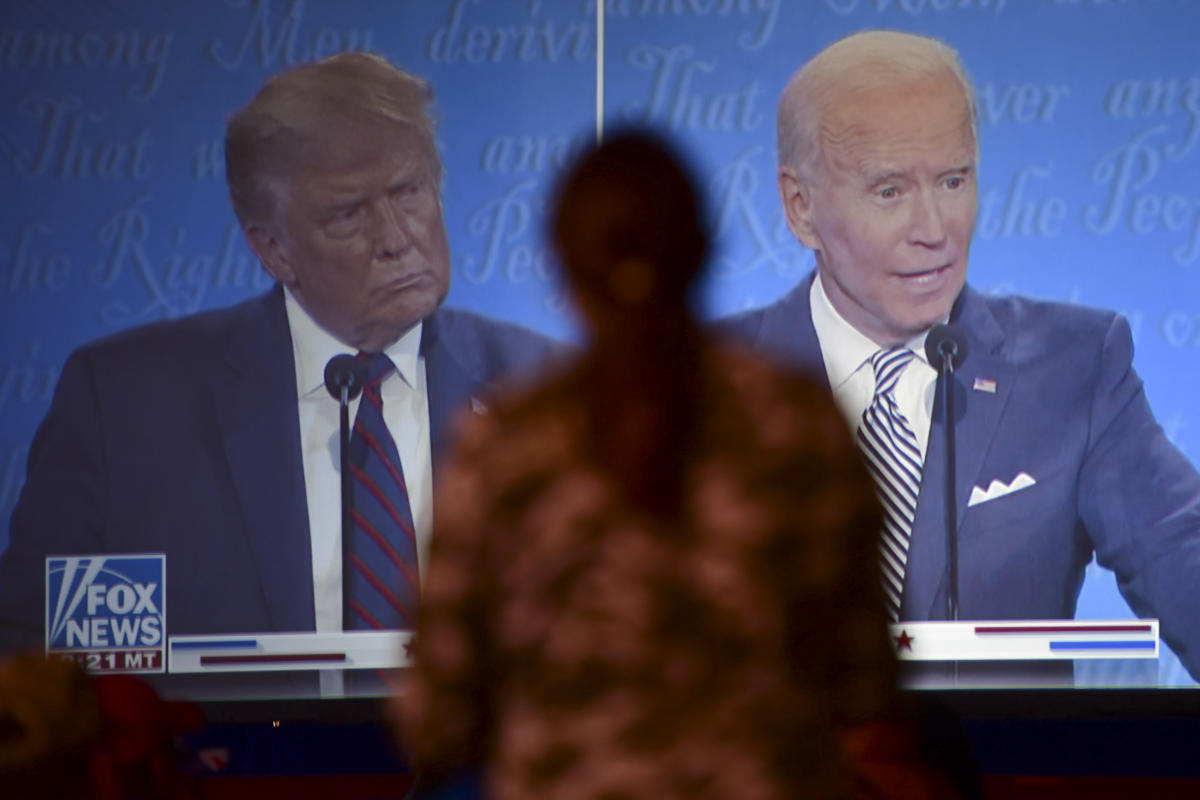Let’s just say it: Joe Biden should be expected to win this election. He’s an incumbent president running for reelection with a reasonably healthy economy against an unpopular opponent accused of multiple federal crimes.
And yet Biden is not winning, at least not now. Polls show him trailing in states worth well over 270 electoral votes, and he lags behind Donald Trump in our newest New York Times/Siena College national poll by 5 percentage points among registered voters, 48% to 43%.
Sign up for The Morning newsletter from the New York Times
That’s the largest lead Trump has ever had in a Times/Siena national poll. In fact, it’s the largest lead Trump has held in a Times/Siena or Times/CBS poll since first running for president in 2015.
Why is Biden losing? There are many possible reasons, including his age, the war in the Gaza Strip, the border and lingering concerns over inflation. But ultimately, they add up to something very simple: Biden is very unpopular. He’s so unpopular that he’s now even less popular than Trump, who remains every bit as unpopular as he was four years ago.
Biden’s unpopularity has flipped the expected dynamic of this election. It has turned what looked like a seemingly predictable rematch into a race with no resemblance to the 2020 election, when Biden was a broadly appealing candidate who was acceptable to the ideologically diverse group of voters who disapproved of Trump.
Instead, many voters will apparently agonize between two candidates they dislike. It’s exactly what Democrats sought to avoid when they nominated Biden in 2020. It’s what Democrats largely avoided in the 2018 and 2022 midterm elections, when they mostly nominated acceptable candidates or ran incumbents against right-wing opponents. And it’s exactly what led to the election of Trump in 2016.
Overall, 19% of registered voters in the Times/Siena survey have an unfavorable view of both candidates — a group sometimes referred to as “double haters.” These voters say they backed Biden by a 3-to-1 margin among those who voted in 2020, but now he holds the support of less than half. Every vote counts, but these voters will undoubtedly be pivotal in deciding the November election.
The double haters might ultimately return to Biden’s side. There are still eight months left until November, and it’s not as if these voters like Trump. If they do come back to Biden, perhaps their return will have seemed inevitable in retrospect.
But from today’s vantage point, we can’t know what will happen. What we know is that the choice for these voters is much more difficult for them than it was four years ago, when they said they liked Biden. They don’t today. It creates the conditions for a volatile race, and it might just be enough to flip their preference for president as well.
A few other items of note:
— In our last poll in December, Biden led by 2 points among likely voters, even though he trailed by 2 among the wider set of registered voters. But in this poll, Trump holds a 4-point lead among likely voters. That’s still better for Biden than his 5-point deficit among registered voters, and it continues a pattern of unusual Biden strength among the likeliest voters, but the difference is no longer enough to give Biden the lead.
Biden’s strength remains relatively concentrated among the most regular voters, as he holds a 46-45 lead among those who have voted in a midterm or a primary. He trails by only 2 points among those “almost certain to vote.” But many other voters will turn out in a general election, and at least in this particular poll, they’re enough to give Trump a modest lead.
— The poll found Trump leading Nikki Haley in the Republican primary, 77-20. That’s pretty good for Trump, of course, but it’s actually Haley’s best result in a month. And according to our poll, there’s a simple reason for her strength: Biden voters, who now make up 15% of those who say they will probably vote in the Republican primary. In fact, a near majority of Haley’s supporters (48-31) say they voted for Biden in the last election instead of Trump.
— Biden’s support among nonwhite voters keeps sinking. He held just a 49-39 lead among the group, even though nonwhite respondents who voted in the 2020 election said they backed Biden, 69-21.
— Despite the positive economic news over the last few months, 51% of voters still said the economy was “poor.” In a strange way, perhaps that’s good news for Biden: Maybe his standing will improve if or when voters begin to gain confidence that the economy has turned the corner.
— Even at this late stage, Democrats are still divided over whether Biden should be the nominee, with 46% saying he should be and 45% saying he shouldn’t. We didn’t ask whether Biden should drop out of the race. We considered it — in fact, we discussed it for days — but many respondents may not know the complications involved in a contested convention.
c.2024 The New York Times Company







